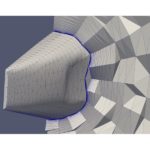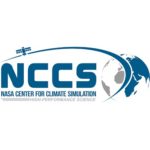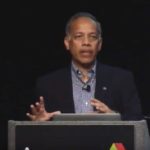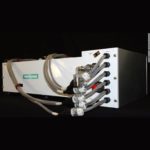Eric Nielsen from NASA gave this talk at SC17 in Denver. “In the field of computational fluid dynamics, the Navier-Stokes equations are often solved using an unstructured-grid approach to accommodate geometric complexity. Furthermore, turbulent flows encountered in aerospace applications generally require highly anisotropic meshes, driving the need for implicit solution methodologies to efficiently solve the discrete equations. To prepare NASA Langley Research Center’s FUN3D CFD solver for the future HPC landscape, we port two representative kernels to NVIDIA Pascal and Volta GPUs and present performance comparisons with a common multi-core CPU benchmark.”
NASA Goddard Boosts Discover Supercomputer to 5 Petaflops
CSRA Inc. has acquired another compute expansion under its High Performance Computing contract with NASA’s Goddard Space Flight Center. “This HPC expansion brings our compute capacity to over 50 petaFLOPS for all CSRA HPC contracts across the federal government,” said Sharon Hays, PhD., Director of CSRA’s HPC Center of Excellence. “This HPC expansion will help NASA researchers meet their mission objectives and bring a greater understanding of the earth’s climate system.”
Pointwise Announces Geode Geometry Kernel
Today Pointwise announced Project Geode, the company’s response to the NASA CFD Vision 2030 Study’s identification of the lack of CFD software access to geometry. As part of the announcement, Pointwise has opened beta testing of a geometry modeling kernel for computer-aided engineering (CAE) simulation software. “The kernel’s core geometry evaluation functions can provide all the functionality a CFD solver would need for tasks like mesh adaption and elevation of elements to higher-order. We are now seeking additional beta testers to validate this idea.”
Blue Waters Supercomputer Crunches Data from NASA’s Terra Satellite
Researchers are using the Blue Waters supercomputer at NCSA to process new data from NASA’s Terra Satellite. Approximately the size of a small school bus, the Terra satellite explores the connections between Earth’s atmosphere, land, snow and ice, ocean, and energy balance to understand Earth’s climate and climate change and to map the impact of human […]
Supermicro Powers Advanced Analytics at NASA NCCS
Today Supermicro announced that the company has partnered with the NASA Center for Climate Simulation (NCCS) to expand advanced computing and data analytics used to study the Earth, solar system and universe. Based on the combination of density, system performance and optimized cost, the Supermicro FatTwin-based solution brings an additional 1.56 PetaFlops to NASA researchers. The Rack Scale solution is factory integrated at Supermicro’s Silicon Valley headquarters to deliver optimal reliability and efficiency.
HPC Connects: Mapping Global Ocean Currents
In this video from the SC17 HPC Connects series, Dimitris Menemenlis from NASA JPL/Caltech describes how supercomputing enables scientists to accurately map global ocean currents. The ocean is vast and there are still a lot of unknowns. We still can’t represent all the conditions and are pushing the boundaries of current supercomputer power,” said Menemenlis. “This is an exciting time to be an oceanographer who can use satellite observations and numerical simulations to push our understanding of ocean circulation forward.”
Video: NASA Advanced Computing Environment for Science & Engineering
Rupak Biswas from NASA gave this talk at the Argonne Training Program on Extreme-Scale Computing. “High performance computing is now integral to NASA’s portfolio of missions to pioneer the future of space exploration, accelerate scientific discovery, and enable aeronautics research. Anchored by the Pleiades supercomputer at NASA Ames Research Center, the High End Computing Capability (HECC) Project provides a fully integrated environment to satisfy NASA’s diverse modeling, simulation, and analysis needs.”
Future HPC Leaders Gather at Argonne Training Program on Extreme-Scale Computing
Over at ALCF, Andrea Manning writes that the recent Argonne Training Program on Extreme-Scale Computing brought together HPC practitioners from around the world. “You can’t get this material out of a textbook,” said Eric Nielsen, a research scientist at NASA’s Langley Research Center. Added Johann Dahm of IBM Research, “I haven’t had this material presented to me in this sort of way ever.”
NASA Perspectives on Deep Learning
Nikunj Oza from NASA Ames gave this talk at the HPC User Forum. “This talk will give a broad overview of work at NASA in the space of data sciences, data mining, machine learning, and related areas at NASA. This will include work within the Data Sciences Group at NASA Ames, together with other groups at NASA and university and industry partners. We will delineate our thoughts on the roles of NASA, academia, and industry in advancing machine learning to help with NASA problems.”
Podcast: HPE Sends a Supercomputer into Orbit
In this TechNative Podcast, Mark Fernandez from HPE describes the company’s collaboration with NASA to send a supercomputer into orbit. ““By NASA’s rules, not just any computer can go into space. Their components must be radiation hardened, especially the CPUs,” reports HPE Insights. “Otherwise, they tend to fail due to the effects of ionizing radiation.”












